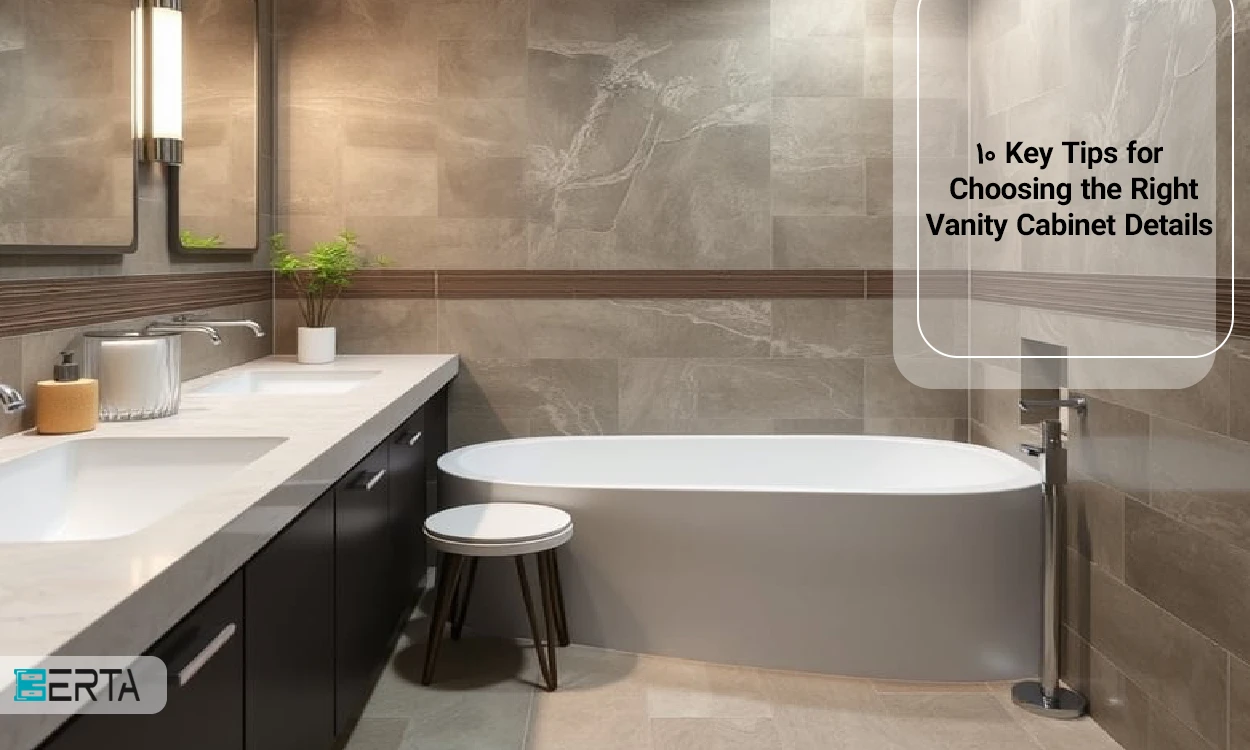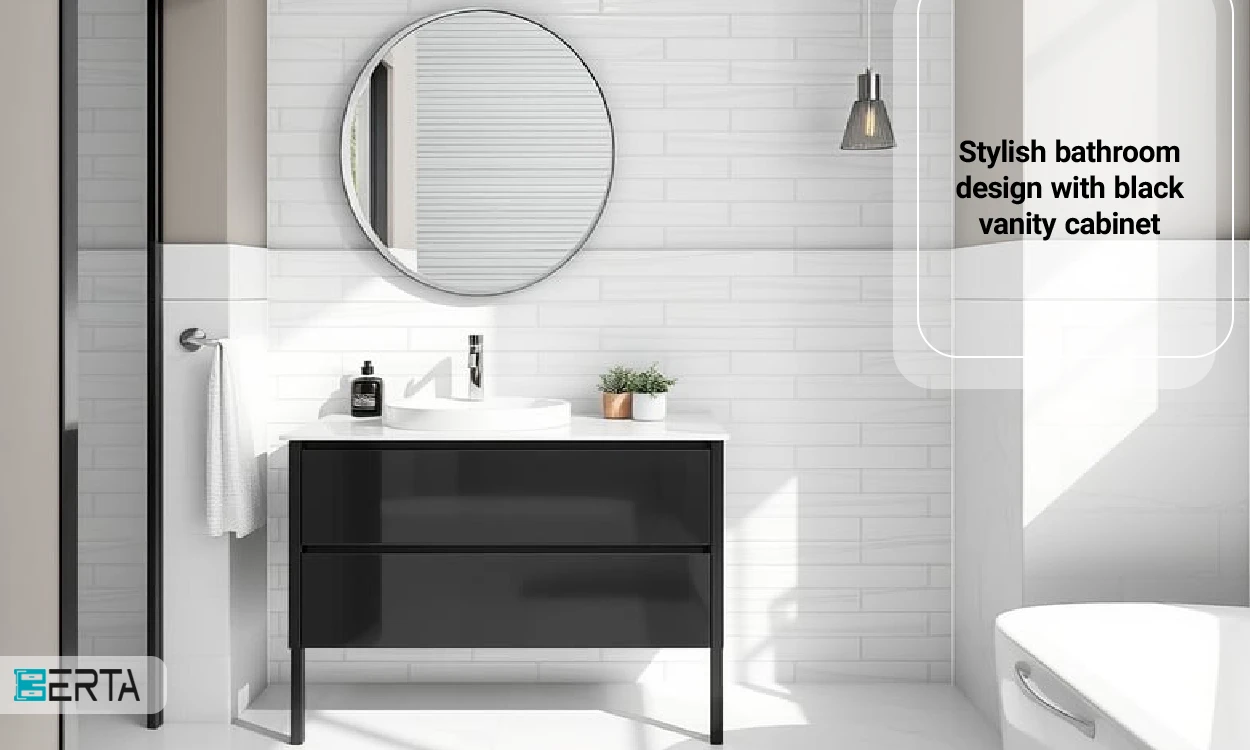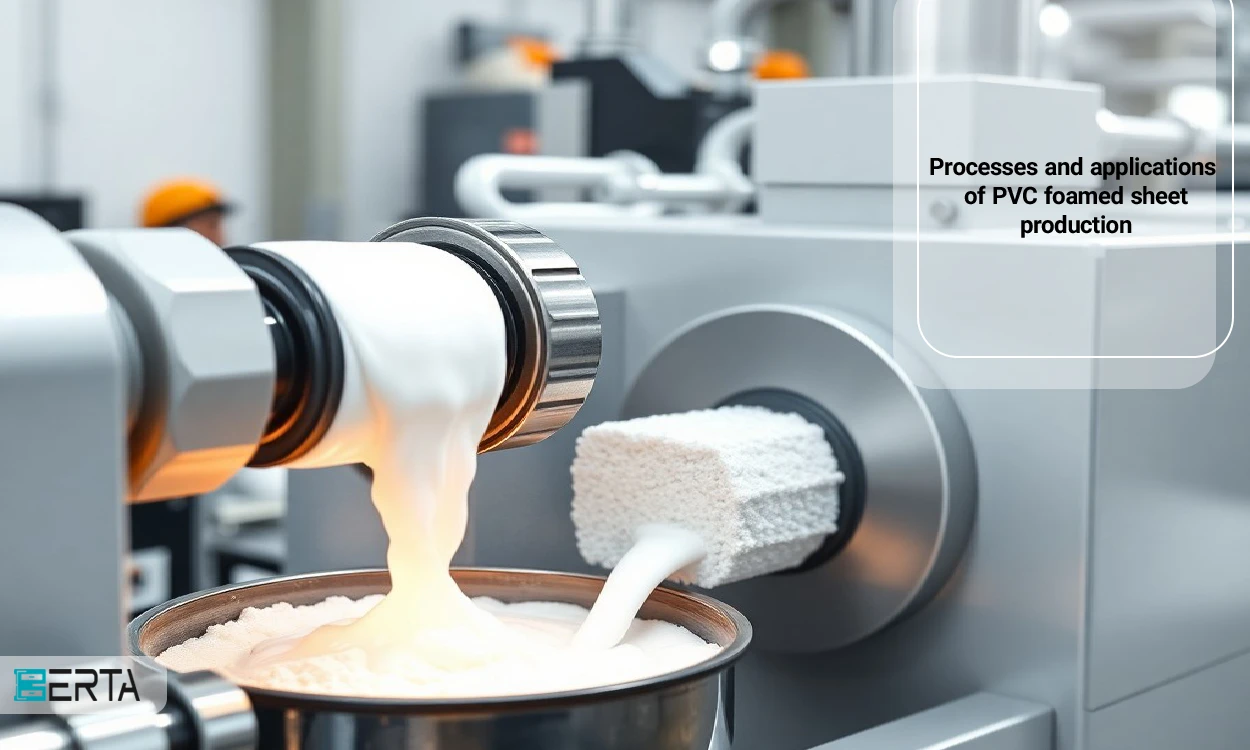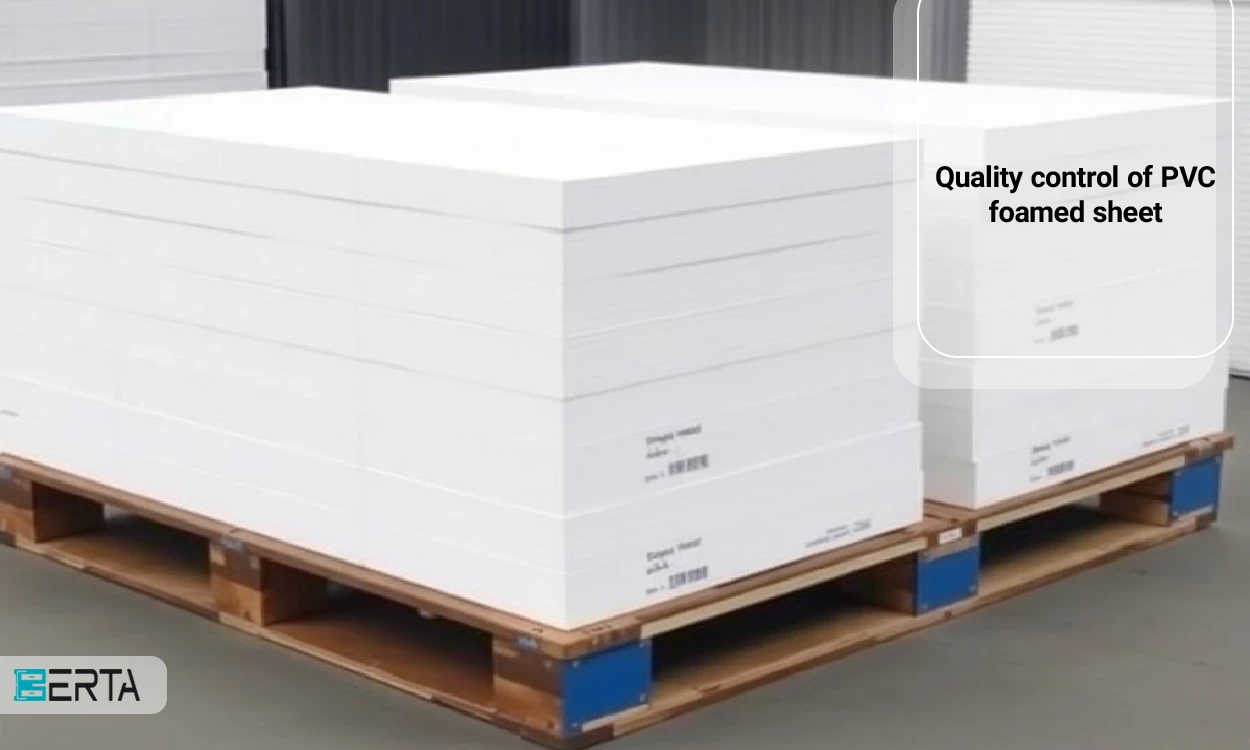In today's world, with the advancement of technology and new designs, choosing kitchen equipment has become one of the main concerns of families. One of these equipment that plays an important role in improving air quality and reducing the smell of food at home is the kitchen hood. However many people avoid installing traditional hoods due to their size and space. This causes the smell of food to spread in the space and affect the peace of the house. But with new initiatives, hidden hoods have been designed and produced that fit easily in the kitchen space and at the same time are highly efficient. These hoods are designed in such a way that they can be easily opened and started working when needed and are completely hidden when not in use. This feature makes hidden hoods an attractive option for people who are looking to maintain the beauty and interior design of their kitchen. In this article, we will examine hidden hoods, and their advantages and disadvantages, so that you can choose the best option for your kitchen with complete and accurate information.
All kinds of hidden hoods
Concealed hoods are known as one of the important components in modern kitchen design. These hoods are specifically used to reduce noise and improve the beauty of interior design. In the following, we will examine the types of hidden hoods:
1- Hidden hoods under the cabinet
Under-cabinet hoods are installed directly under the upper cabinets. These types of hoods fit easily in the kitchen due to their compact and hidden design and are very beautiful.
Advantages:
- Occupying less space: these hoods occupy less space due to installation under the cabinet.
- Beautiful design: because they are hidden, they do not damage the overall design of the kitchen.
- Effective performance: These hoods usually have good suction power and can absorb cooking smoke well.
2- Hidden wall hood
Concealed wall hoods are wall-mounted and usually placed above the stove. The design of these types of hoods is such that they are not easily seen during work and help the beauty of the kitchen.
Advantages:
- High suction power: These hoods usually have stronger motors that can absorb vapors and odors.
- Modern design: The design of these hoods is usually very stylish and modern, which adds to the overall appeal of the kitchen.
- Ease of installation: installing these hoods on the wall is usually easier than other types of hoods.
3- Island hidden hoods
Concealed island hoods are designed for use in kitchens that have an island. These hoods are usually installed in the center of the island and hang from the ceiling.
Advantages:
- Unique Design: These hoods act as an attractive design element due to their placement in the center of the island.
- High suction power: island hoods usually have very high suction power and can absorb vapors quickly.
- Adjustability: Many of these hoods have options to adjust the suction power and brightness, which allows for more flexibility.
Advantages of using hidden hoods
As one of the key components in the design of modern kitchens, hidden hoods bring many advantages. Next, we examine the three main benefits of these hoods:
1- Beauty and modern design
One of the biggest advantages of hidden hoods is their beauty and modern design. These hoods are designed to be hidden under cabinets or walls, giving the kitchen a clean and unified look.
- Minimalist design: hidden hoods are easily coordinated with other kitchen elements due to their simple design and no additional elements, and prevent the space from being crowded.
- Ability to choose color and material: Many hidden hoods are available in different colors and materials, which allows you to coordinate the hood with your kitchen decoration.
- Increased visual appeal: By hiding the hood, you can focus more on other aesthetic elements of the kitchen, such as cabinets and islands.
2- Increasing the kitchen space
Concealed hoods effectively increase the kitchen space due to their special design. Instead of taking up more space, these hoods are hidden in the space and allow you to use the available space in the best way.
- Free space: By using hidden hoods, you can have more space for cooking and other activities, without the hood acting as an obstacle in the space.
- Improving the flow of movement: By reducing the obstacles in the kitchen, the flow of your movement in the kitchen space is improved and you can easily move between different points.
- Creating a sense of space: Concealed hoods create a sense of space and make the kitchen appear more open due to the absence of a large outdoor space.
3- Reduce engine noise
Another advantage of hidden hoods is the reduction of engine noise during operation. These hoods are usually designed to make less noise and provide a quieter cooking experience.
- Advanced technologies: Many hoods use new technologies that help reduce noise, such as silent motors and sound insulation.
- Optimum efficiency: By reducing the volume, you can easily talk to family and friends or listen to music while cooking, without the sound of the hood disturbing you.
Important points in choosing a hidden hood
Choosing the right hidden hood can have a great impact on the functionality and beauty of your kitchen. In the following, we will consider three important points in choosing a hidden hood:
1- Suction size and power
One of the most important factors in choosing a hidden hood is its size and suction power. These two factors directly affect the efficiency of the hood and its ability to absorb cooking vapors and odors.
- Hood Size: The hood should be large enough to fit effectively over the stove. Normally, the width of the hood should be at least as wide as the stove to absorb the vapors well.
- Suction power: The suction power of the hood is usually measured in CFM (cubic feet per minute). For normal kitchens, a hood with a suction power between 300 and 600 CFM is sufficient. However, if you use more powerful stoves or multi-function gas stoves, you may need a hood with higher suction power.
2- Types of filters
Hood filters play an important role in hood performance and maintenance. Choosing the right type of filter can affect the air quality in the kitchen.
- Fat filters: These filters are usually made of aluminum or stainless steel and are responsible for absorbing fats from cooking. Grease filters are usually washable and can be placed in the dishwasher.
- Carbon filters: These filters are used to absorb unpleasant odors and are usually used in exhaust hoods. Carbon filters should be replaced periodically.
- HEPA filters: These filters are designed for use in advanced and special hoods due to their ability to absorb small particles and pollutants. If you are allergic or live in an area with high pollution, this type of filter can be a good option.
3- Design and color
The design and color of the hidden hood are also very important because the hood must be in harmony with the overall decoration and design of the kitchen.
- Modern design: Concealed hoods usually come with minimalistic and stylish designs that can help beautify the kitchen. Choosing a hoodie with a simple design and clean lines can make the kitchen space more beautiful.
- Color and material: hoods are available in different colors and materials such as stainless steel, glass, and matte colors. Choosing the color and gender that is in harmony with the cabinets and other elements of the kitchen helps to create a unified space.
- Lighting: Some hidden hoods have LED lighting that can help brighten up the kitchen area. Choosing a hood with the right lighting can help improve your cooking experience.
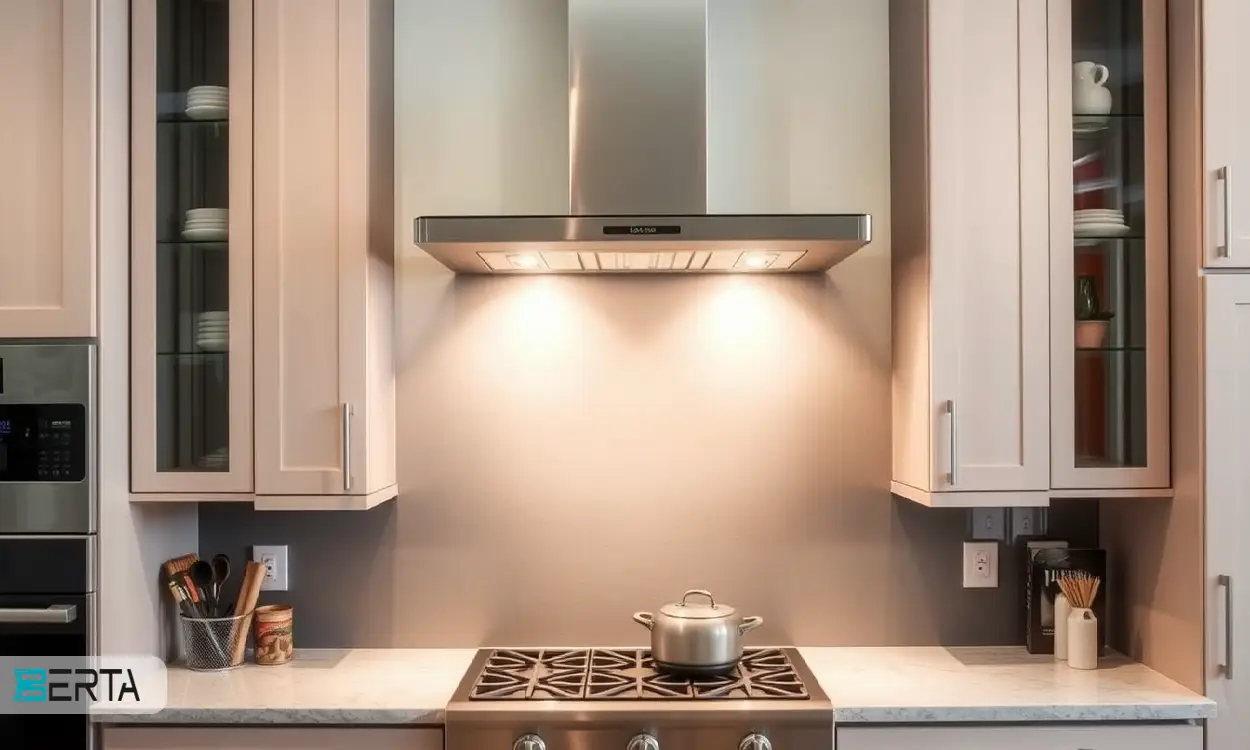
Installation and maintenance of hidden hoods
Correct installation and maintenance of hidden hoods can help increase their life and efficiency. In the following, we will examine the installation steps and maintenance and cleaning tips of hidden hoods.
1- Installation steps
Installing a hidden hood may vary depending on its type and model, but the general installation steps are as follows:
1- Selecting the installation location: First of all, choose the installation location of the hood. The hood should be placed directly above the stove and have a good distance from the surface of the stove (usually 24 to 30 inches).
2- Preparation of tools and materials: The required tools include drill, screwdriver, meter, and safety tools such as glasses and gloves. Also, make sure you have the hood and installation kit.
3- Installing the brackets: Install the mounting brackets firmly on the wall or under the cabinets. Make sure the brackets are properly aligned.
4- Installing the hood: Place the hood gently on the brackets and fasten it using the corresponding screws. This step may require two people to easily hold the hood in place.
5- Electrical connections: If the hood has lighting or an electric motor, you must make its electrical connections. This work should be done carefully and if you are not familiar with electrical work, it is better to get help from a professional technician.
6- Ventilation connections: If your hood has a ventilation outlet, you must connect it to the ventilation channel. Make sure the channel is installed correctly and there are no leaks.
7- Performance test: After installation, turn on the hood and test its performance. Make sure the engine is running properly and the lights are on.
2- Maintenance and cleaning tips
Regular maintenance and cleaning of hidden hoods can help increase their efficiency and lifespan. Here are some important points in this regard:
1- Filter cleaning: Fat filters must be cleaned regularly. These filters are usually washable and you can put them in the dishwasher. It is recommended to clean the filters every month or every two months.
2- Cleaning the surface of the hood: To clean the surface of the hood, use a soft cloth and a mild detergent solution. Avoid using harsh chemicals or harsh scrubs to avoid damaging the surface of the hood.
3- Checking the connections: Periodically check the electrical and ventilation connections of the hood to make sure there are no leaks or damage.
4- Filter replacement: If your hood has a carbon filter, you must replace these filters periodically. Replacement times are usually listed in the hood manual, but generally, every 6 to 12 months is recommended.
5- Attention to sound: If you notice an increase in sound or a decrease in the suction power of the hood, it may need to be checked and repaired. In this case, it is better to contact a professional technician.
Comparison of hidden hoods with normal hoods
| Types of hoods | hidden hoods | normal hoods |
| benefits | - Beautiful and modern design - Save space - Noise reduction - The ability to hide in the decoration |
- Stronger suction power - Variation in design and sizes - Easier installation and maintenance - They usually cost less |
| Disadvantages | - They may have less suction power - Installation and repairs may be more complicated - The need for accuracy in selection and installation |
- They may occupy more space - The design may be less attractive - More noise while working |
| Applications | - Suitable for small and modern spaces - Ideal for minimalist decorations |
- Suitable for large and industrial kitchens - Suitable for people who need more suction power |
| The most suitable places to use | - For modern and minimalist spaces - In small houses and apartments |
- For large spaces and the need for strong suction - In restaurants and commercial kitchens |
Price comparison of hidden and normal hood
| Hood type | price (approximate) | description |
| Hidden hoods | 1,500,000 - 5,000,000 Tomans |
-The price depends on the brand, design and suction power. - Usually the installation cost is also calculated separately. |
| Normal hoods | 800,000 - 3,000,000 Tomans |
-The price is usually lower than hidden hoods. - There is more variety in prices. |
conclusion
Concealed hoods are known as a modern and efficient solution to eliminate food odors and air quality problems in kitchens. These hoods with beautiful designs and effective performance allow you to use the kitchen space in the best way and at the same time do not reduce its beauty. Considering the advantages and disadvantages of hidden hoods and the important points in choosing and installing them, you can make an informed decision and benefit from a better cooking experience.




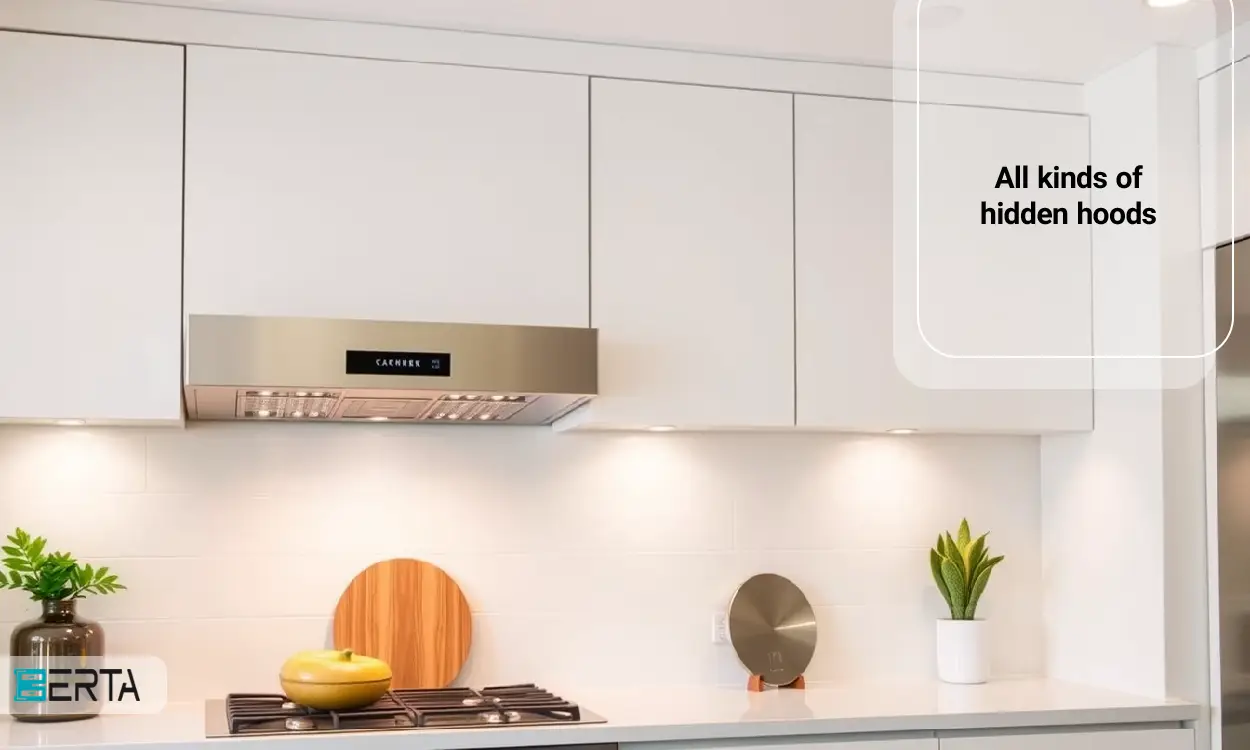
17938.jpg)
 Whatsapp
Whatsapp  Telegram
Telegram 

